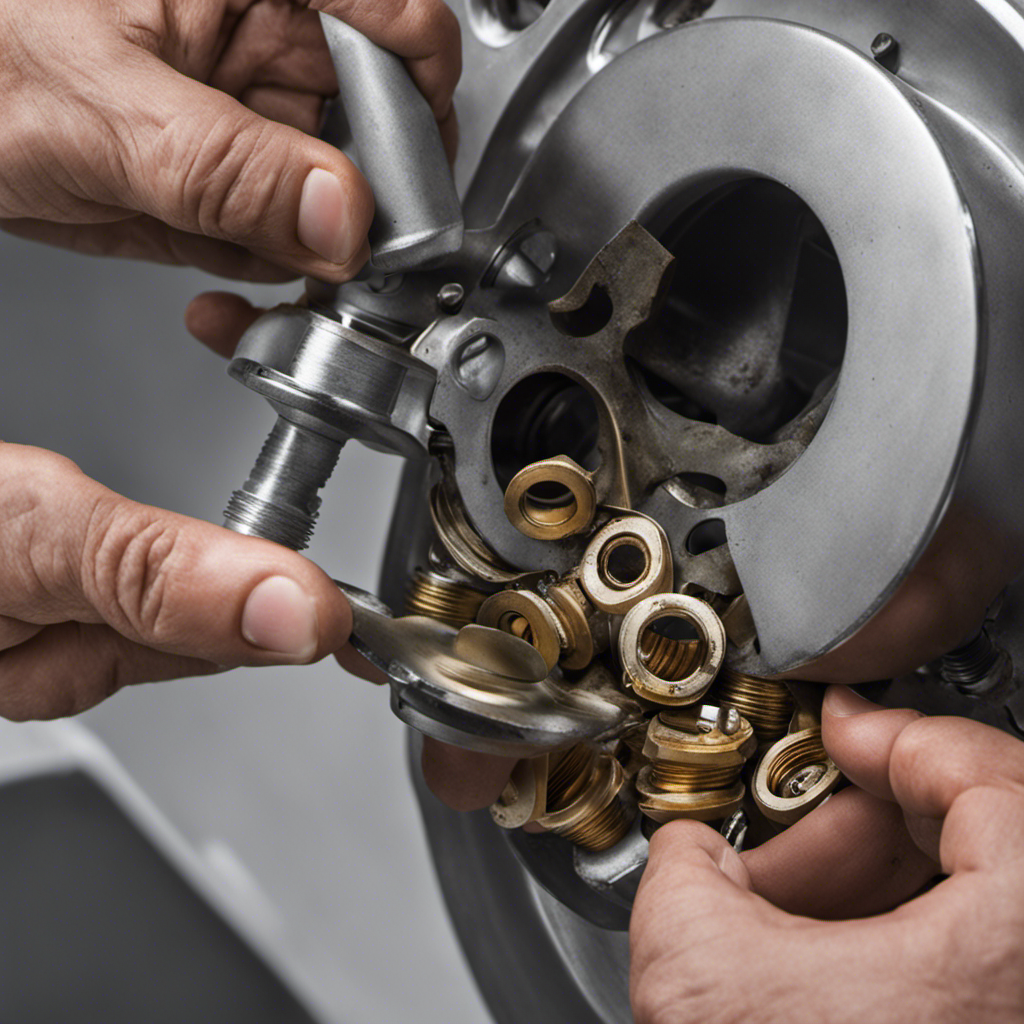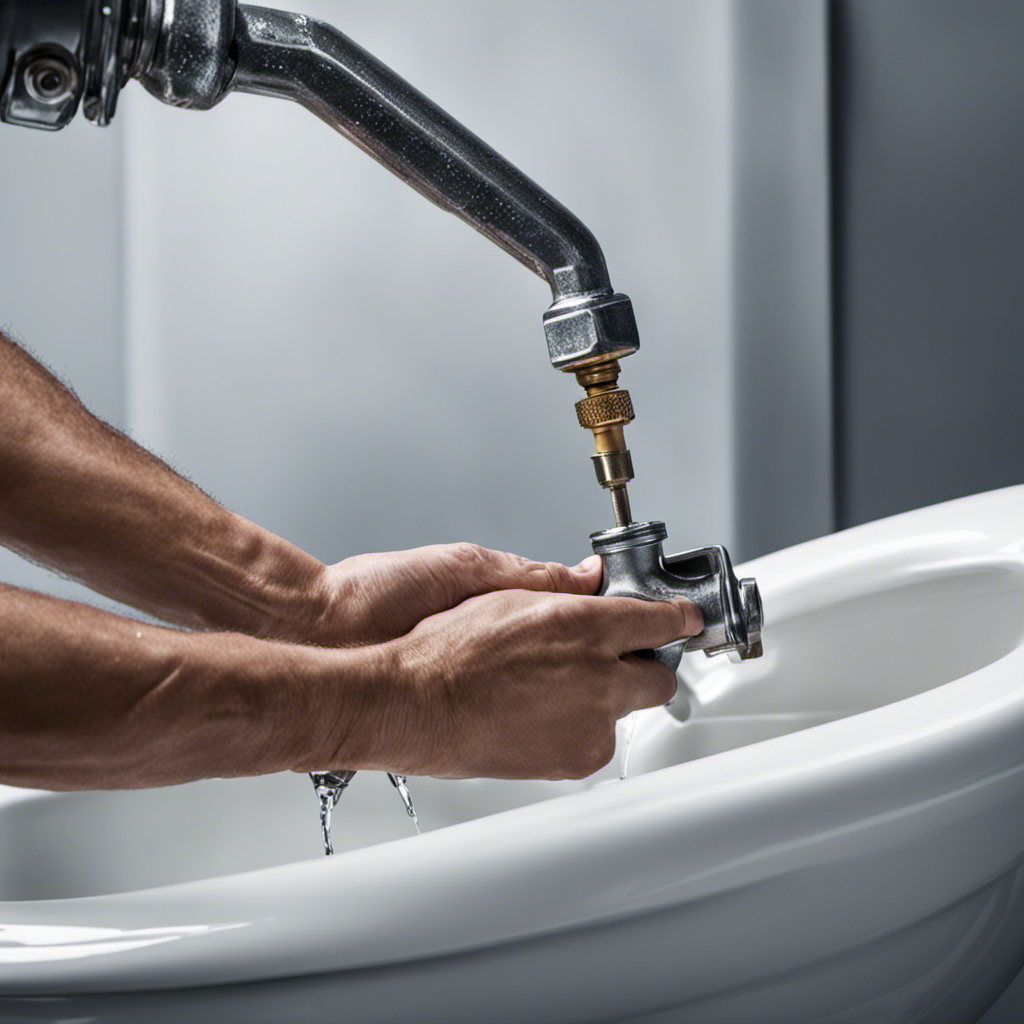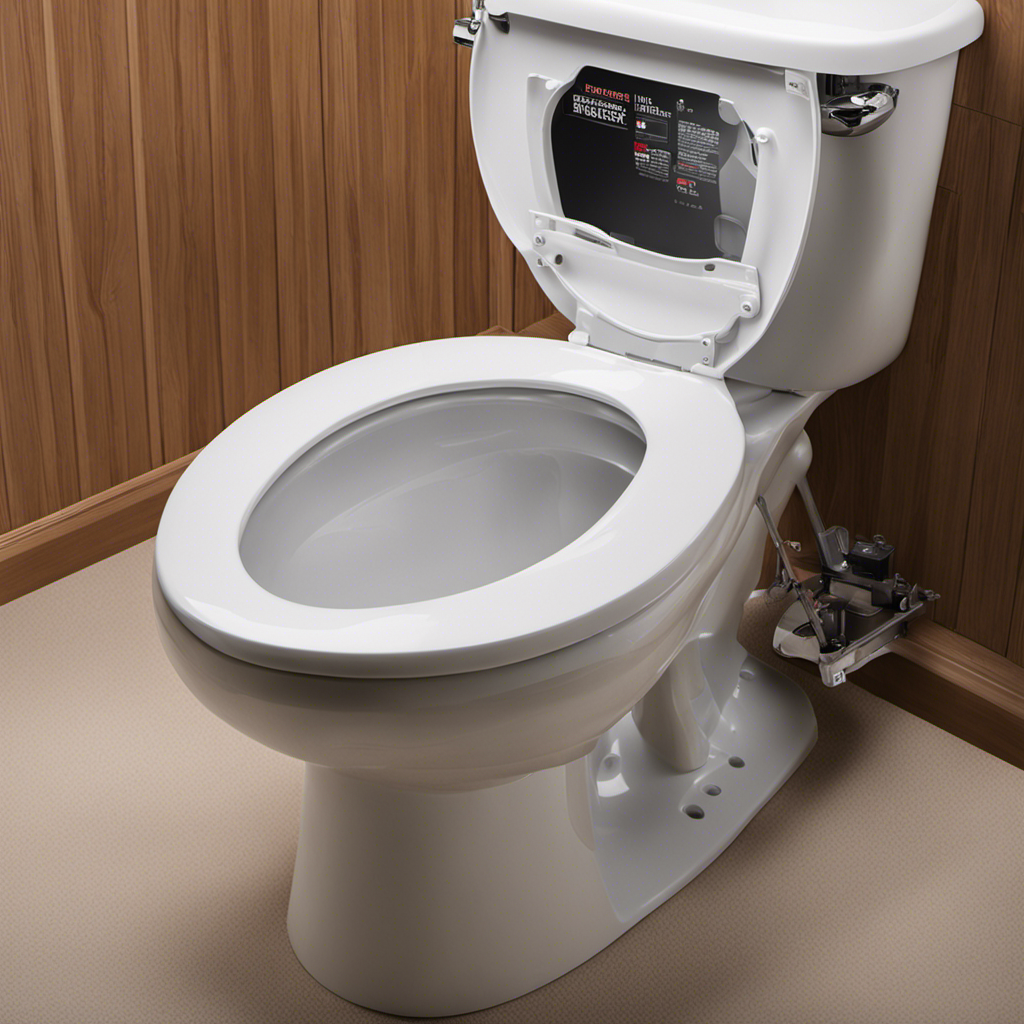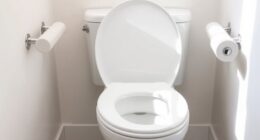Did you know that every time you flush the toilet, an average of 1.6 gallons of water is sent down the drain? Fascinating, isn’t it?
In this article, I will take you on a journey through the plumbing system and explore the intricate mechanisms behind the flushing process.
We will also delve into the mysterious realm of the sewer system, tracing the path of wastewater from your toilet to the treatment plant.
Additionally, we will discuss the environmental impact of this everyday act.
So, let’s dive in and uncover the secrets of where the water goes when you flush the toilet.
Key Takeaways
- Flushing creates a siphon effect, pulling waste into the drainpipe.
- The waste travels through the sewer line connected to the main sewer system.
- Regular maintenance is important to prevent clogs and leaks.
- The rush of water during flushing pushes waste down the drainpipe.
The Plumbing System: A Closer Look
Let’s take a closer look at how the water flows through the plumbing system when you flush the toilet.
The plumbing system plays a crucial role in ensuring that waste is properly disposed of and that clean water is supplied to our homes.
When you flush the toilet, the water is released from the tank and flows into the bowl, creating a siphon effect. This causes the waste and water to be pulled into the drainpipe.
From there, the waste travels through the sewer line, which is connected to the main sewer system.
It is important to regularly maintain the plumbing system to prevent clogs and leaks.
Additionally, practicing water conservation by using low-flow toilets and fixing any leaks can help reduce water waste and contribute to a more sustainable future.
Understanding the Flushing Mechanism
When you press the flush handle, it’s the chain attached to the flapper that releases water into the toilet bowl. Understanding the flushing mechanism is crucial to comprehend the intricacies of toilet mechanics.
The flushing process begins with the lift chain pulling up on the flapper, which is a rubber valve covering the flush valve opening at the bottom of the tank. As the flapper lifts, water rushes out of the tank and into the bowl through the flush valve. This sudden rush creates a strong force that pushes waste and wastewater down the drainpipe.
Simultaneously, the tank refills with fresh water to prepare for the next flush. This continuous cycle of the flushing mechanism ensures proper disposal of waste and maintains the functionality of the toilet.
Exploring the Sewer System
The sewer system is responsible for carrying waste and wastewater away from homes and buildings. It plays a crucial role in maintaining proper sanitation and preventing the spread of diseases.
Here are some key aspects of sewer maintenance and wastewater management:
-
Sewer Maintenance:
-
Regular inspections to identify any blockages or damages in the sewer lines.
-
Routine cleaning to remove debris, grease, and other obstructions that can cause clogs.
-
Wastewater Management:
-
Treatment plants where wastewater is processed and treated before being released back into the environment.
-
Implementation of advanced technologies to remove pollutants and harmful substances from the wastewater.
Proper sewer maintenance and wastewater management are essential to ensure the efficient operation of the sewer system and protect public health and the environment. Regular maintenance and adherence to regulations play a vital role in preventing sewer backups, reducing the risk of water contamination, and maintaining a clean and healthy environment for all.
Journey of the Wastewater: From Toilet to Treatment Plant
Once you use the toilet, the wastewater goes through a series of pipes and channels before reaching the treatment plant. This journey is a crucial part of the water treatment process.
After flushing, the wastewater enters the sewer system, where it travels through a network of underground pipes. These pipes transport the wastewater to the treatment plant, where it undergoes a thorough purification process.
At the treatment plant, the wastewater is first screened to remove large objects and debris. Then, it goes through a series of physical, chemical, and biological processes to remove contaminants and impurities. Finally, the treated water is disinfected and released back into the environment or recycled for various purposes, such as irrigation or industrial use.
Understanding this water treatment process is essential for ensuring the proper recycling of wastewater and minimizing its environmental impact.
Now, let’s explore the environmental impact of flushing.
Environmental Impact of Flushing
Flushing has a significant environmental impact that needs to be addressed. The amount of water used in traditional toilet flushes is excessive, causing unnecessary strain on our water resources. To tackle this issue, water conservation methods have been developed to reduce toilet flush volume.
Here are some key points to consider:
-
Water Conservation:
-
Dual-flush toilets: These toilets have two buttons or handles, one for liquid waste and the other for solid waste, allowing users to choose the appropriate flush volume.
-
Low-flow toilets: These toilets use less water per flush, typically around 1.6 gallons or less compared to the standard 3-5 gallons.
-
Alternative Toilet Systems:
-
Composting toilets: These toilets break down waste into compost material, reducing the need for water and providing a nutrient-rich soil amendment.
-
Waterless toilets: These toilets use no water at all, relying on chemical or microbial processes to break down waste.
Frequently Asked Questions
How Do Toilets Actually Flush?
Toilets flush by using a combination of gravity and water pressure. When the flush lever is pressed, it lifts a flapper valve, allowing water from the tank to rush into the bowl. This sudden rush of water creates a siphon effect, pulling waste and water down the drain pipe. This process is essential for efficient toilet engineering and water conservation.
What Happens to the Wastewater After It Leaves the Toilet?
When you flush the toilet, the wastewater travels through pipes to a wastewater treatment plant. There, it undergoes a series of processes to remove pollutants and harmful bacteria before being safely released back into the environment. This wastewater treatment is essential to minimize the environmental impact.
Are There Different Types of Flushing Mechanisms in Toilets?
There are different types of flushing mechanisms in toilets. Water conservation and reducing environmental impact are important considerations. It is crucial to choose a flushing mechanism that efficiently uses water and minimizes waste.
How Does the Sewer System Handle the Large Volume of Wastewater From Multiple Toilets?
When multiple toilets flush, the sewer system handles the large volume of wastewater, preventing sewer overflow. The water travels through a network of pipes, eventually reaching a water treatment plant where it is treated and released back into the environment.
What Are the Potential Health and Safety Risks Associated With Flushing?
Potential health hazards and environmental implications arise from flushing. Proper waste management is critical to prevent contamination of water sources and the spread of diseases. Understanding these risks is essential for maintaining a safe and sustainable sanitation system.
Conclusion
In conclusion, flushing the toilet may seem like a simple everyday task, but it is actually part of a complex and efficient plumbing system.
As the water rushes down the drain, it embarks on a journey through the sewer system, where it joins millions of gallons of wastewater.
This waste is then transported to treatment plants, where it undergoes a rigorous process to remove contaminants and pollutants.
Just like a river flowing through a pristine forest, the water is cleansed and purified, ready to be returned to our environment.
So next time you flush, remember the incredible journey your wastewater takes, and the positive impact it has on our planet.










